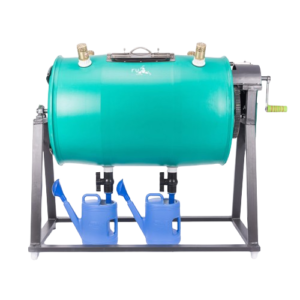Enquire About
Bio-Composters
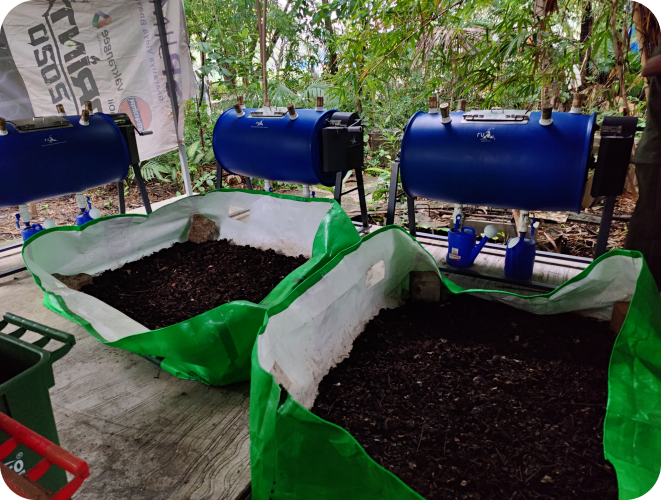

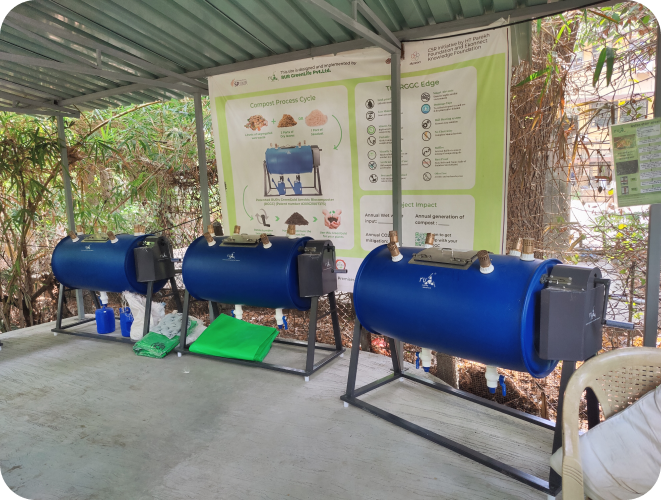
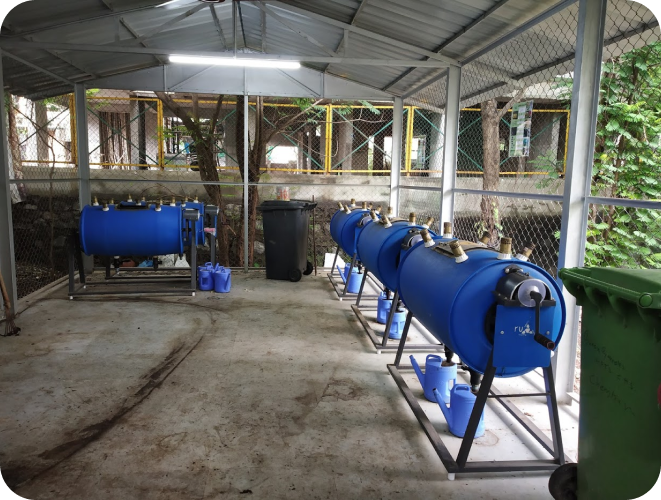
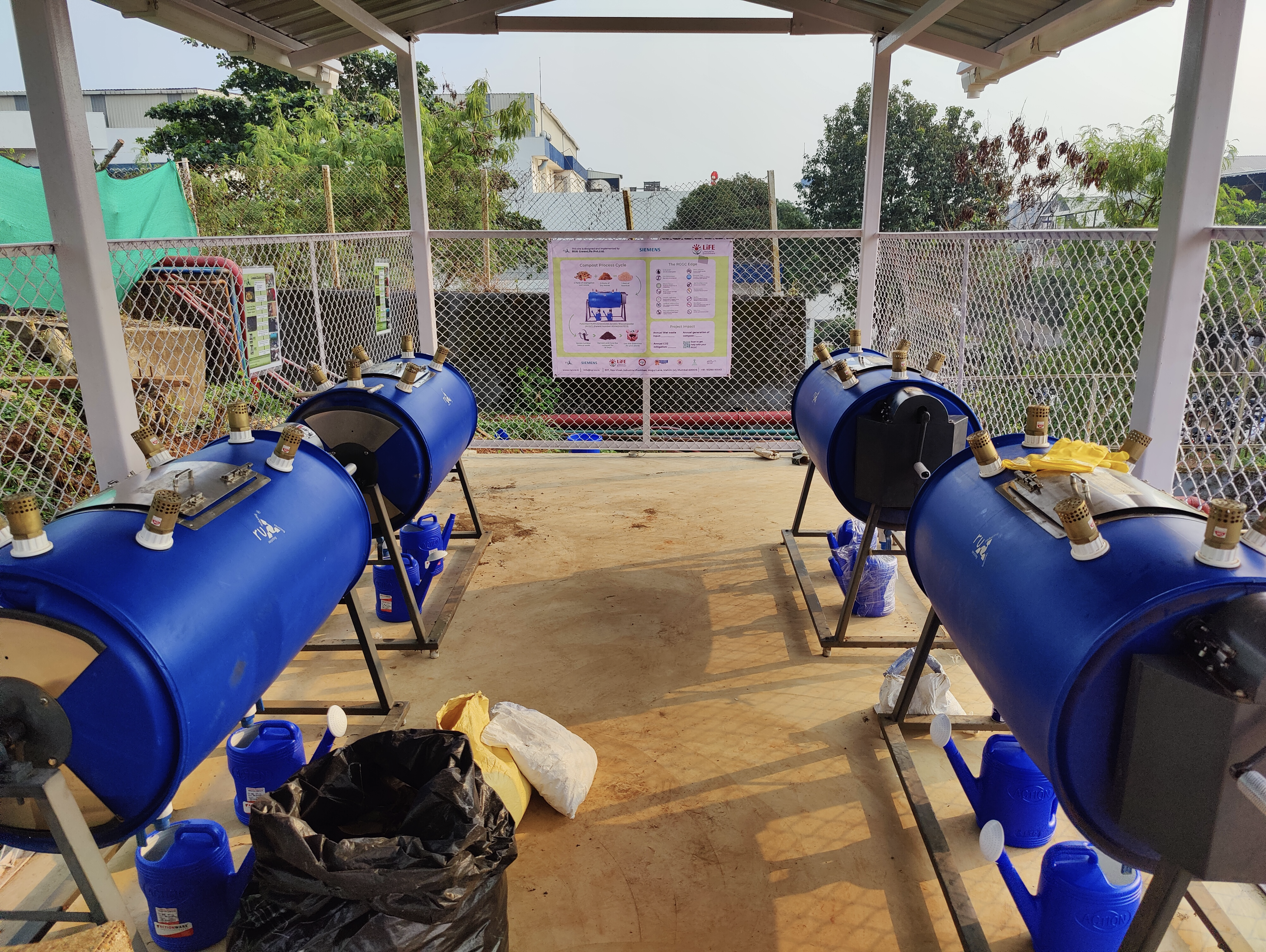
What are Large
Composters
Kitchen waste management in large commercial kitchens is
expensive. It’s an everyday problem. RUR Large Composters are the
best solution to reduce these expenses and are ideally suited for
Resorts, Hotels, Industrial canteens, College Canteens,
Socieites…
- These systems efficiently reduce more than 80% of the Kitchen waste by converting them into compost. That’s a huge saving in kitchen waste handing costs
- Further the rich compost can be used as organic fertliser to enhance the greenery all around. Further reducing fertiliser procurement costs.
Who can use
them

Corporate

Residential Societies

Schools, Colleges & Institutions

Hotels,Resorts & Hospitals

Industrial Plants & Factories

Social Welfare Organisations
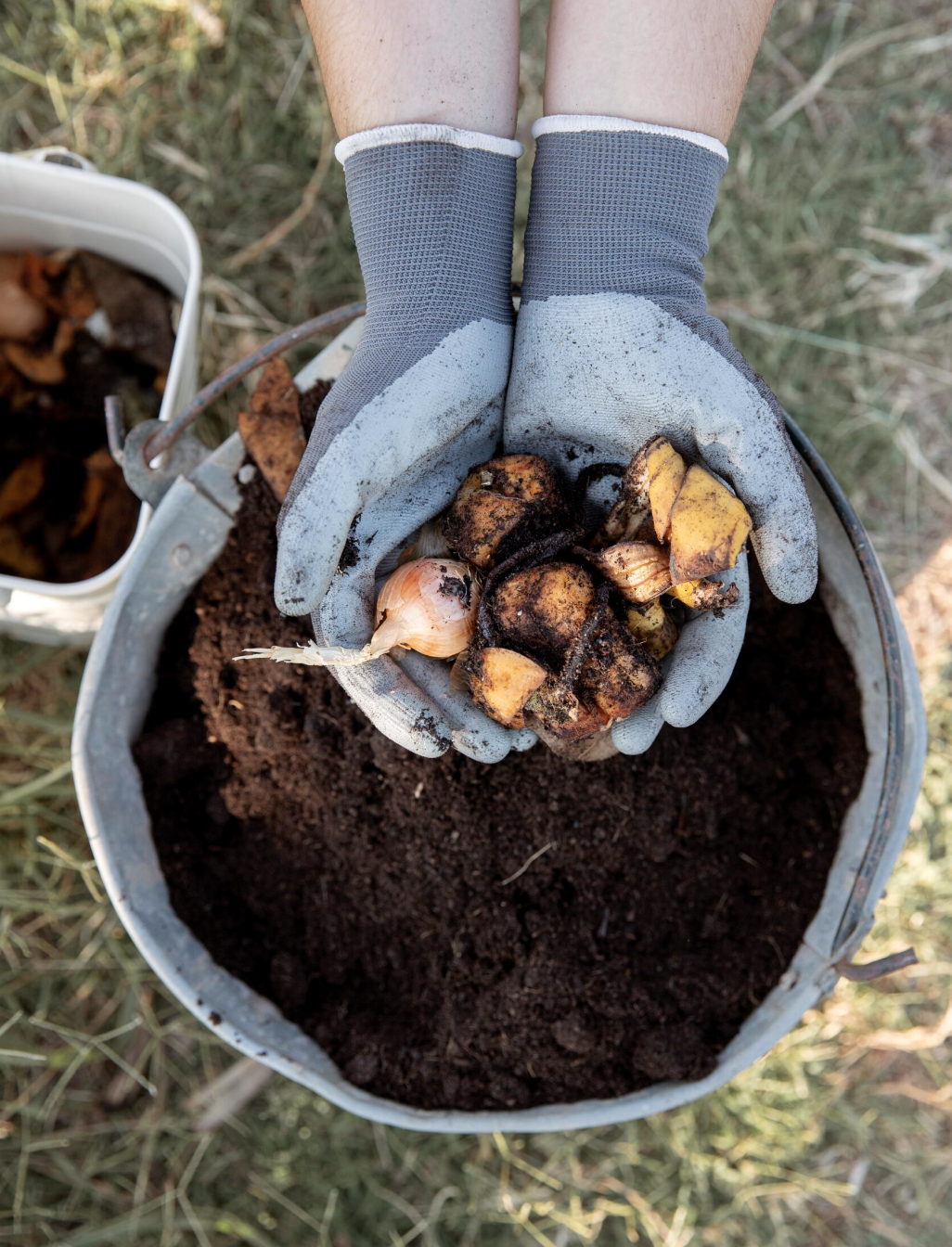
Online Demo of RGGC
Smart Features

Smart Vents
View Patent +- The brass vents, coated with chromium for superior durability, are integral to the functionality of our RGGC (RUR Green Gold Composter).
- Chromium plating serves as a shield against corrosion, guaranteeing the longevity of these vents. Their primary role lies in facilitating air supply to the compost pile, a crucial aspect of our aerobic composter.
- Continuous aeration, enabled by these vents, ensures the pile remains well-oxygenated, effectively averting the development of foul odors during the decomposition process.
- Brass vents, chromium-coated for durability, are crucial in our RGGC.
- Chromium plating prevents corrosion, ensuring long-lasting performance.
- These vents supply air to the compost pile, vital for aerobic composting.
- Continuous aeration prevents foul odors during decomposition.

Role of Tumbling Mechanism
- Consistent tumbling of the compost pile, ideally conducted at least once a week, stands as a crucial practice for upholding optimal conditions within the RGGC.
- This routine fosters thorough mixing of both older and newer compost materials, thereby facilitating efficient decomposition processes.
- Moreover, the tumbling action serves to break down any clumps that might form within the composter, ensuring a uniform decomposition rate throughout the entirety of the pile.
- At least once a week, is imperative for maintaining optimal conditions.
- This practice promotes thorough mixing of older and newer compost materials, facilitating efficient decomposition
- Additionally, tumbling aids in breaking down any clumps that may form within the RGGC, ensuring uniform decomposition.

Proof of Gold Standard in Compost
View certificate +- Composting epitomizes the principles of a circular economy, wherein waste is transformed into a valuable resource. High-quality compost replenishes soil nutrients, essential for the cultivation of healthy vegetables and crops.
- By maximizing the utilization of compost, we can foster the growth of organic produce, enhancing food security and preserving the integrity of seeds and crops.
- This approach mitigates the reliance on artificial Soil Manure, thereby contributing to sustainable agricultural practices.
- Composting epitomizes the principles of a circular economy, wherein waste is transformed into a valuable resource.
- High-quality compost replenishes soil nutrients, essential for the cultivation of healthy vegetables and crops.
Buy Large Composters










1/5
We are happy to state that after a comprehensive study of various types of equipment and processes for composting, we found the solution offered by RUR as the most suitable to our requirements and decided to go for it. We got wonderful support from knowledgeable scientific staff of RUR in residents training, process monitoring, and guidance till confidence build-up. We got the compost analysed by the Indian Institute of Soil & Water Conservation, Dehradun, showing highly satisfying results.
Malhar Society


2/5
We are pleased to partner with RUR Greenlife for our decentralized waste management project. With your guidance, we successfully installed the composter system at our college. Over two months, we composted 237 kg of canteen wet waste into 43 kg of nutrient-rich compost, now used as Soil Manure on our green campus. By adopting your method and diverting wet waste from landfills, we are proud to save 30.7 kg CO2 equivalent in carbon footprint annually .
Principle Bombay College Of Pharmacy


3/5
Godrej, along with five societies across Mumbai, selected RUR after a thorough vendor selection process. The project's success is a testament to the RUR team's enthusiasm, technical expertise, and commitment to sustainability. They have sensitized residents, ensured waste segregation, and set up organic and dry waste systems, demonstrating the feasibility of responsible waste management. This collaboration has paved the way for our developments to become near zero-waste communities, addressing urban waste issues effectively.
Godrej Properties Ltd
(5 Societies, 200kg/day waste)


4/5
Monisha Narke and her team at RUR have been invaluable partners in our awareness programs from the very beginning. Through their passion and dedication, RUR has developed a science-based, patented solution for waste management. I've personally witnessed their success at multiple sites in Mumbai, where their composting solutions effectively handle housing society wet waste. We've also hosted RUR for demonstrations during workshops with students and citizens, highlighting their entrepreneurial success in addressing waste management challenges not only in Mumbai but across India.
Ekonnect Knowledge Foundation
Sonal Alvares, Head


5/5
We are indeed grateful to RUR Greenlife Pvt. Ltd. for handholding us throughout the installation of our personnel and also providing periodic inspections and equipment training to ensure that the process is carried out properly. Your team's dedication and expertise have been invaluable in making our waste management project a success. We would have no hesitation in recommending RUR Greenlife to others seeking effective and eco-friendly waste management solutions. Thank you for your continued support and partnership.
Cypress Society

FAQ's
Is it important to chop waste before composting?

Not mandatory for all waste but recommended. Chop Watermelon rind, leafy veggie stalk.
Will Mango seeds and hay compost?

Mango seeds take over 6 months to compost, while hay needs to be chopped before composting.
How do I know if my compost is ready?

It will start to smell of fresh soil, turn black and attain soil like structure
How to use the compost?

Put in potted plants or create a bed with 11 soil compost mix and sow seeds. Replenish compost every month.
Is this same as vermicomposting?

No, vermicomposting requires earthworms, while this process is driven by bacteria and fungus
Are there any risks from these bacteria and fungus?

No, they are beneficial organisms for composting and not pathogenic

